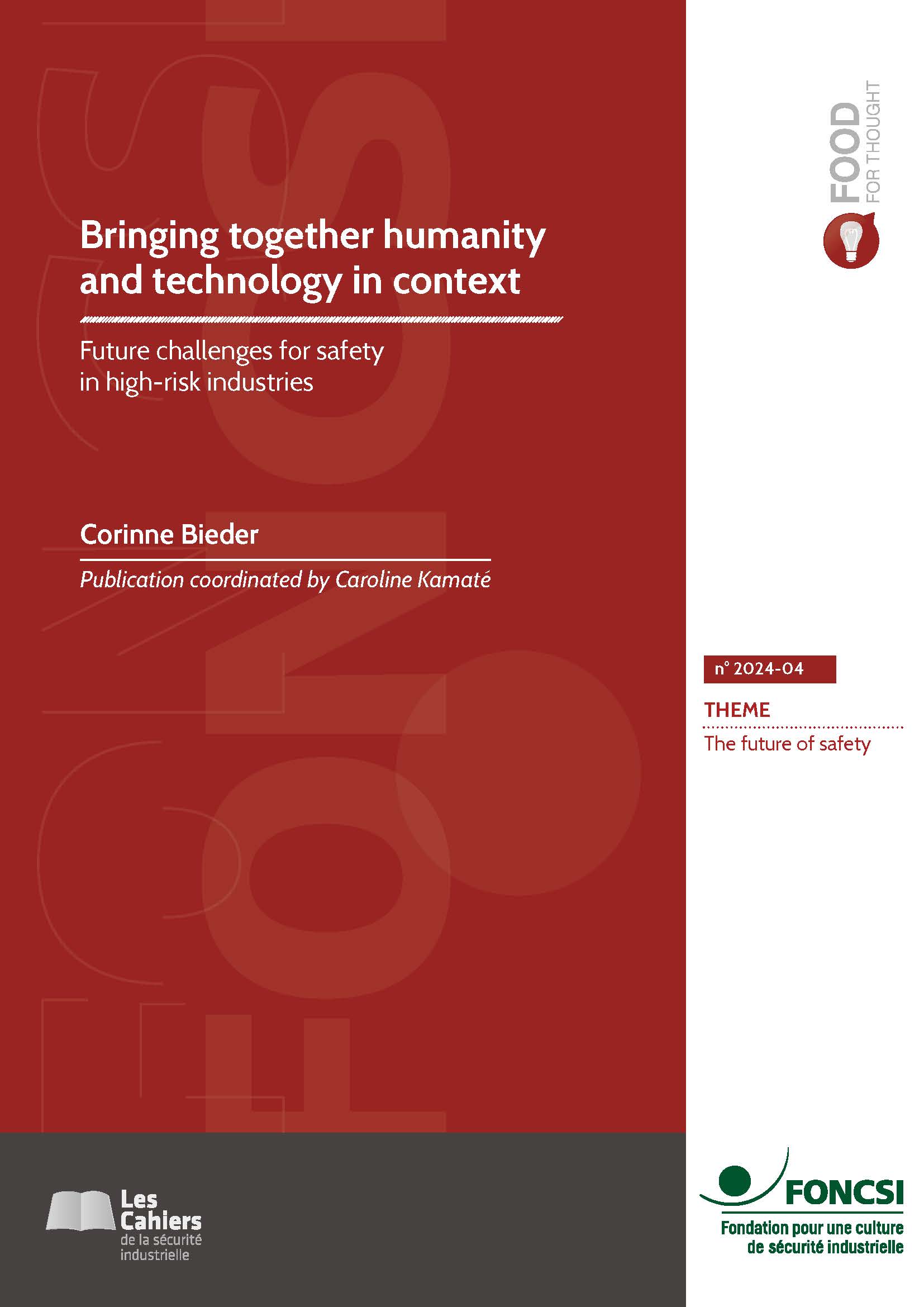
Bringing together humanity and technology in context
The fast pace of evolution of digital technologies is shaking up the conventional high-hazard industry landscape, introducing new challenges for safety. This document focuses on the role played by humans in the 2030-2040 timeframe as regards how safety is managed and governed.
The results highlight the impact of the implicit framework adopted to appreciate the respective contributions of humans and digital technologies to the safety of high-hazard industries. Whereas a human-centered framework emphasizes specific human capabilities such as empathy, making sense, judgment, as critical to safety, a technology-centered one focuses on computational power and speed as promises to future safety. None of these frameworks opposing humans and digital technologies seems appropriate to account for real situations where they both coexist and are interrelated in more complex ways than just through man-machine interfaces.
Furthermore, they are part of a broader social, political, organizational, and cultural context calling for qualifying absolute statements on Technology and Humanity. More generally, high-risk operations are complex. Thinking in terms of dichotomies (e.g., technology/humans; digital/non-digital) is too simplistic to anticipate the safety challenges ahead of us. Exploring the interrelations between humans and digital technologies includes investigating the context in which they evolve to frame possible future safety challenges in a relevant manner. This means involving diverse perspectives and disciplines to bring together humans and technologies in context and reflect the complex reality.
Published under Creative Commons licence. See conditions for reproduction.
 Bringing together humanity and technology
Bringing together humanity and technology
